Rumours of its beauty, its history as the oldest botanic garden in the southern hemisphere, combined with the knowledge that it is one of the most popular tourist destinations in Mauritius, meant a visit was a must. The Sir Seewoosagur Ramgoolam Botanic Garden in Pamplemousses didn’t disappoint!! Botanist’s we are not, but we certainly enjoyed viewing the vast species these gardens had to offer. Our visit and further research once home also educated us, not only on the flora, fauna and birdlife but also on a few people associated with the island’s history.
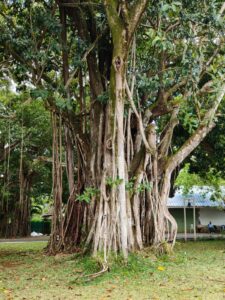
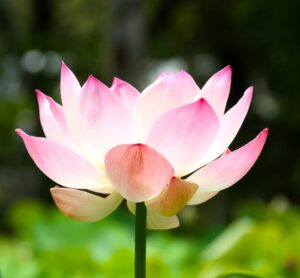
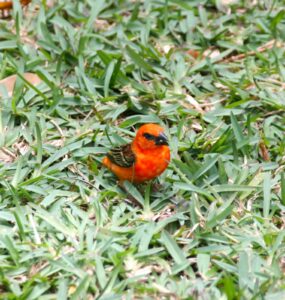
We were given a couple of maps of the Botanic Garden after paying our small entrance fees, and, wanting some time to ourselves, we ignored (perhaps wrongly) paying for a guide to take us around and instead tried to navigate our way to the points of interest. The guide would have provided us with valuable insight and knowledge of what we saw, but alas, it was our honeymoon, and it was nice just to enjoy each other’s company!!
François Mahé de Labourdonnais
A Frenchman and a successful sailor and trader before he became Governor of the Island (1735-1749). He set about raising many buildings, including a fort, armoury, and warehouses. He established Port Louis as a naval base and installed a dry dock to establish ship building. He also set about building a number of houses, one of which was Chateau de Mon Plaisir (located in the Botanic Garden). Following our newly acquired maps we headed straight for the first point of interest, the Chateau. A beautiful building standing proudly, it immediately captivated our attention as we walked towards it blissfully unaware of its history. We admired the building but didn’t venture anywhere near or inside the building, I mean, we were here to see plants!! There were some noticeable trees planted by famous visitors. One in particular caught the eye and that was planted by Princess Margaret on the 1st October 1956 and labelled “Lagerstroemia speciosa.”
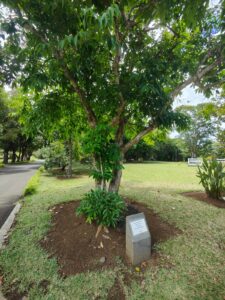

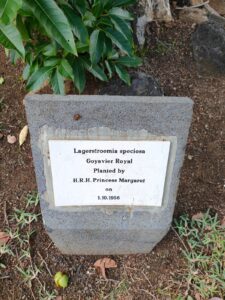
Sir Seewoosagur Ramgoolam
As we moved around the chateau capturing photos from different angles we discovered a place which, I imagine, would have huge significance to the people of Mauritius – a memorial to Sir Seewoosagur Ramgoolam. We were walking on the exact place in which one of the country’s most illustrious sons and who was also called the ‘Father of the Nation’ had been cremated on 17th December 1985 (as was Hindu tradition), 2 days after he deid at the state house in his role as Governor General. It is evident that this man was a giant among Mauritians and highly respected. He was a politician, statesman and philanthropist who fought for the rights of the labourers. His most noticeable contribution was, surely, securing independence from British rule in 1968 and in turn becoming the country’s first prime minster. The significance of the man has only been realised as a result of this trip. Not having been alive when these events happened it is easy to bypass part of British history and the breaking up of the empire. We perhaps should have realised the importance of the man when we arrived at the Sir Seewoosagur Ramgoolam Airport.
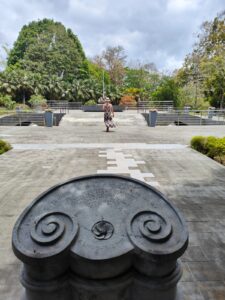
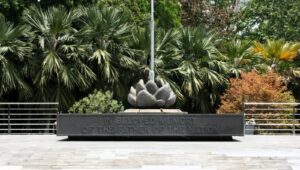
Pierre Poivre
We left the memorial to Sir Seewoosagur Ramgoolam and followed the main avenue (Avenue Sir John Pope Hennessy) towards the white lotus pond. We were enamoured by the local birds as they entertained us on the grass as we walked. The pond had striking, white, lotus plants, photos of which we captured before moving on to find the main feature – the giant lily pond.
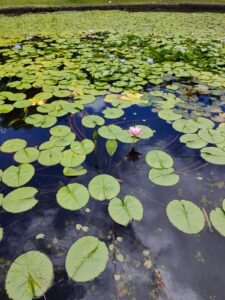
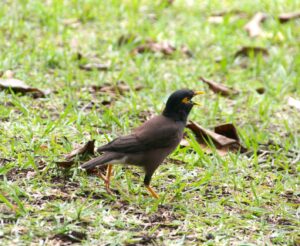
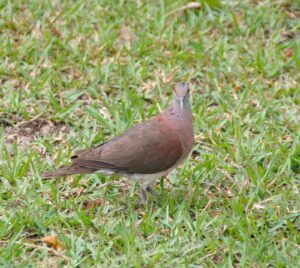
Just before our arrival at the lilies, there was a bust of a gentleman called Pierre Poivre. Again, we blame our unintentional ignorance of who this man was on a lack of resources. With a name like Pierre, you would be right in thinking he was French, which indeed he was! I’ve mentioned that France controlled the islands through the East India company before the British took control in 1830s. During the French ownership, Pierre (in 1765) became Intendent (Governor) of the island and neighbouring Reunion. He founded the botanical gardens that are enjoyed to this day back in 1769 as he tried to break up the Dutch’s monopoly of spices. He brought many plants and seedlings to the island which were mainly varieties of cloves and nutmeg.
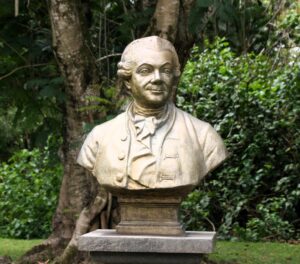
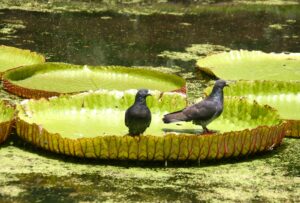
The head of this figure was made such that he looked directly at the Giant Lily Pond. The spectacular Victoria amazonica lilies bathe on the surface of the pond. These lilies are huge compared to the lilies we’re used to back home. Their roots are noticeable around the side and beneath the plants as they lay peacefully in the water. I am not sure whether to describe them as bowling green like or green floating pancakes. They certainly drew a crowd – both people and birds alike.
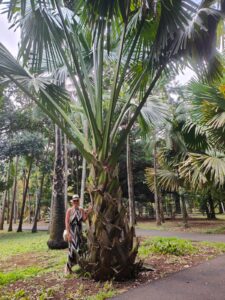
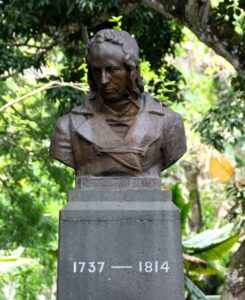
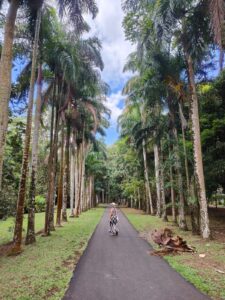
We left the lilies and, following the map, tried to discover anything else that was fascinating. We did walk along ‘Avenue Charles Telfair’ in search of ‘Talipot’ tree. I think it was the wrong time of the year for this to be in bloom as we did not notice it or could see it. We spent time admiring all the flora and fauna of the Botanic Garden. The avenues that we walked were stunning, lined with tall palm trees on both sides. They looked all the same but apparently this is home to over 80 different types of palm tree! We meandered our way around the rest of the gardens before heading back to the main entrance. The gardens spread across some 37.5 hectares.
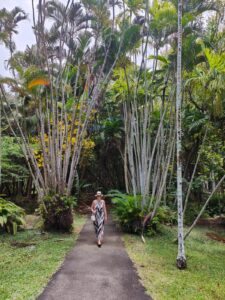
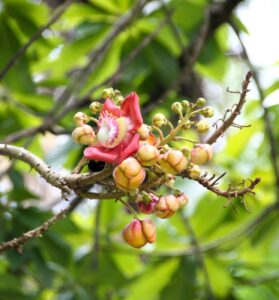
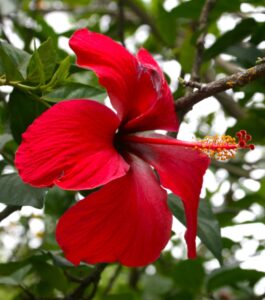
As we walked back we made our way along ‘Avenue Bernardin de St Pierre’ it brought us to the edge of the ‘Grand Bassin’ (I would guess a man-made pond), where we watched nature in all its glory. I mentioned in the ‘Tamarin Trawling’ blog how I had been fascinated with the striated heron. We were lucky enough to see one attempt to get his dinner. We were stood on the edge of the pond and were trying to photograph one in the distance, when Hannah quietly pointed to one just in front of us. I quickly refocused my camera when I saw that he had a fish in his mouth. We stood there watching as the heron tried to kill the fish. The fish was a slippery customer and managed to escape, bloody and wounded back to the haven of the water. The heron bemused by defeat then prowled along the edge of the pond hoping to recapture its prey. Sadly, we couldn’t stay any long to watch any more action. A natural display of life, survival and potential death and food.
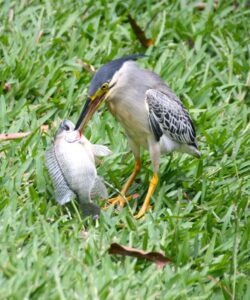
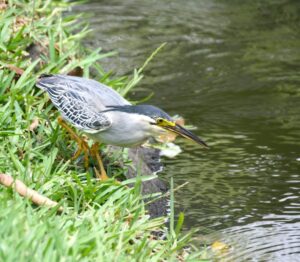
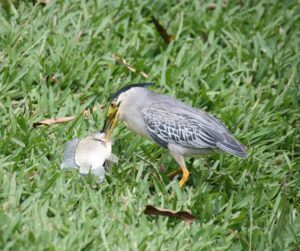
Looking back at the map, it looks like all the avenues are named after people. I would be very surprised if they aren’t associated with the country’s history or had been visitors. We were visitors but, sadly, I don’t think we will get an avenue named after us!! We returned to the entrance absolutely enchanted by our visit to this botanic garden. Perhaps we learned something that day – don’t ignore these botanic gardens when visiting new places on future holidays.

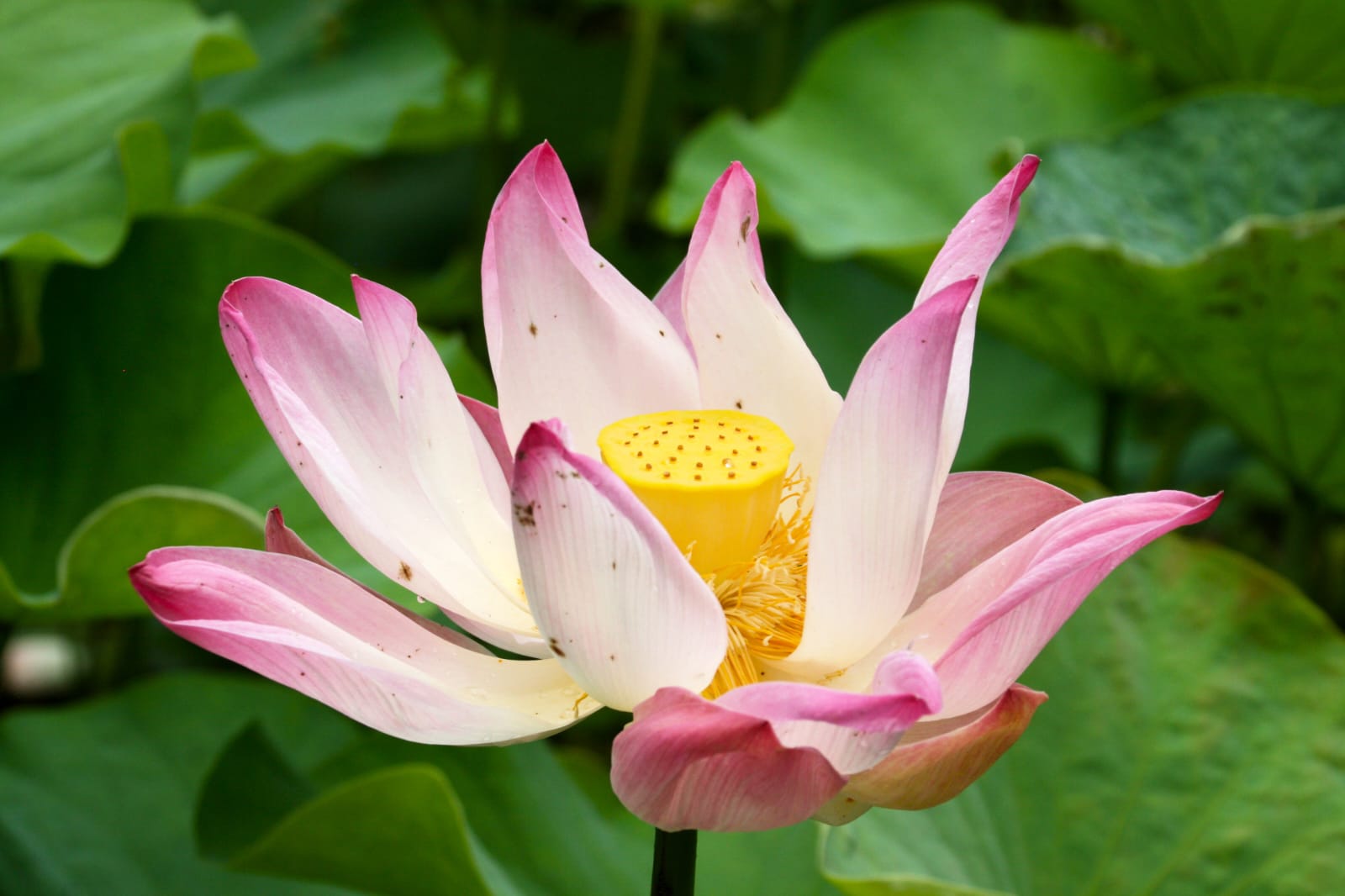
Fascinating
Excellent mate. That’s one place I will be going in August.
That’s good to hear! Definitely worth the visit, pay for the guide as well. They will show you all the good stuff.
Very interesting piece of work. It’s enlightened me no end. Thank you. And thank you to Roger Slade for showing me these articles. Will be going to Mauritius later this year 2025.
I’m glad you found it interesting and hope you enjoy the country as much as we did when we visited!! Be sure to let us know how you get on
Mike Chapman Well done Mark another excellent piece of writing describing in detail your visit to this historical location.The plants trees and flowers were of particular interest,especially when taken close up ,showing every detail. You deserve to have an avenue named after you for sharing this experience with us .Thankyou!